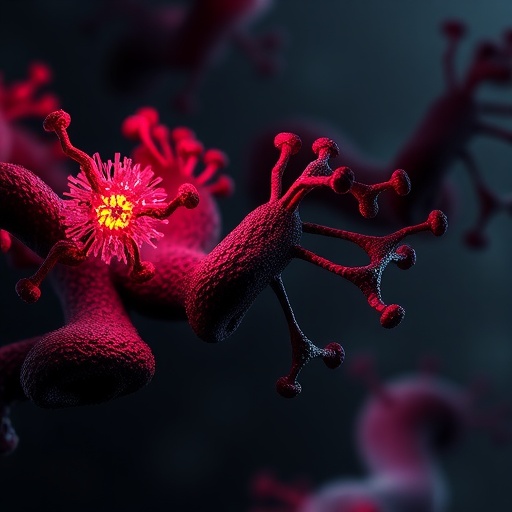A team of Penn State and University of Puerto Rico School of Medicine researchers is attempting to answer a question that has long puzzled experts: Why do some individuals suffer post-traumatic stress disorder (PTSD) after experiencing trauma, and others do not?
The research, led by Nanyin Zhang, professor of biomedical engineering and Lloyd & Dorothy Foehr Huck Chair in Brain Imaging at Penn State, explores whether individual vulnerability to PTSD is due to pre-existing conditions or to a response to trauma exposure.
The team used the predator scent model of PTSD in rats and longitudinal design, which involves repeated observations of the same subject over a period of time. Using this methodology, they measured pre-trauma, brain-wide, neural circuit functional connectivity; behavioral responses to trauma exposure; release of corticosterone, a steroidal hormone produced in the cortex of adrenal glands; and post-trauma anxiety.
The results, reported in a recent issue of Nature Communications, found that rats that freeze and become motionless in response to predator scent exposure, correlate with functional connectivity in a set of neural circuits in the brain of these rats. Functional connectivity is the connectivity between different regions of the brain that share functional properties, and is measured via magnetic resonance imaging.
The researchers found that pre-existing neural circuit function can predispose animals to different fearful responses to threats.
“The data we gathered provides a framework of pre-existing circuit function in the brain that determines threat responses,” Zhang said. “This may directly relate to PTSD-like behaviors.”
Such a framework has a variety of potential benefits for further research into PTSD prevention and treatment.
“This research can help us understand core components of the vulnerability to stress-induced neuropsychiatric disorders,” Zhang said. “These components can potentially serve as indicators to not only predict risk for developing anxiety disorders like PTSD but also assist in evaluating different stages of PTSD and possible recovery.”
Using rats as test subjects helped overcome a major obstacle of investigating risk factors of PTSD in humans — the difficulty of monitoring PTSD development from pre- through post- trauma in humans via exposure to well-controlled traumatic events. Studies on humans focus on populations already exposed to a variety of uncontrolled traumatic events and can lead to inconsistent results. Such barriers were overcome in the present study by using rats and applying longitudinal design with controlled traumatic stressors.
“The outcomes of the research can potentially be translated to human studies,” Zhang said. “For instance, a biomarker predicting a vulnerability to stress-induced disorders will help determine the risk of assigning an individual to a highly stressful environment, such as combat.”
One interesting aside in the study was a counterintuitive finding. Rats with lower freezing behavior showed more avoidance of the predator scent, a prolonged corticosterone response, and higher anxiety long after exposure to the scent.
“It is very likely that they froze less as they adopted different reactions to threats, such as fleeing,” Zhang said.
Zhang said the next steps for the research team include identifying neuroimaging biomarkers that can predict an individual’s response to threats and developing a process for determining the probability an individual will develop PTSD-like behaviors when exposed to trauma. The team will also explore methods to protect animals with high-risk factors from developing PTSD-like behaviors, such as through optogenetics, which is the use of light to control the activities of individual neurons in freely moving animals.
###
Along with Zhang, other researchers working on the study include David Dopfel, doctoral candidate in bioengineering; Pablo Perez, postdoctoral fellow in bioengineering; Alexander Verbitsky, graduate research assistant in engineering science and mechanics; and Yuncong Ma, doctoral candidate in bioengineering, all at Penn State; Héctor Bravo-Rivera, graduate student, University of Puerto Rico School of Medicine; and Gregory Quirk, professor of psychiatry, University of Puerto Rico School of Medicine.
Media Contact
Jamie Oberdick
[email protected]
https:/




